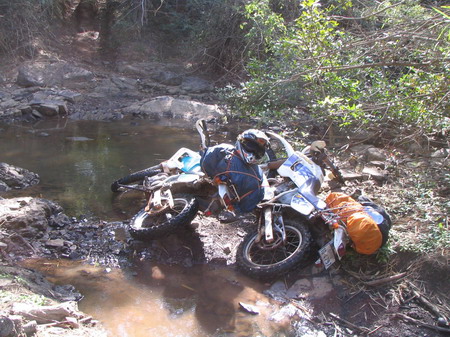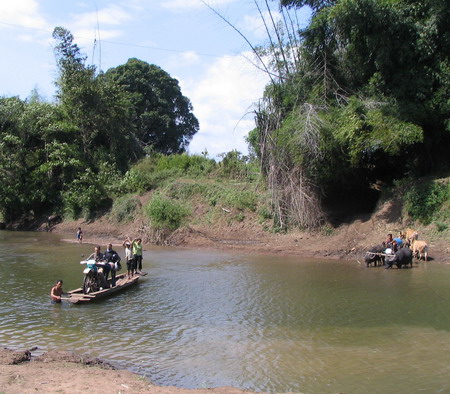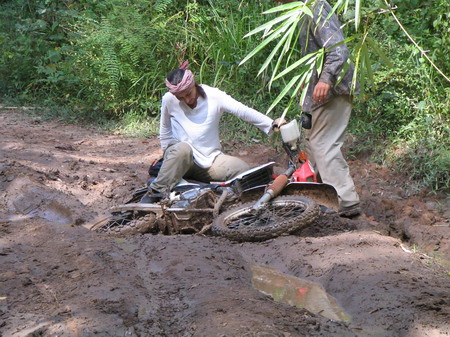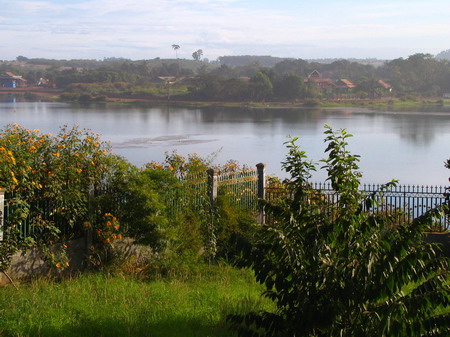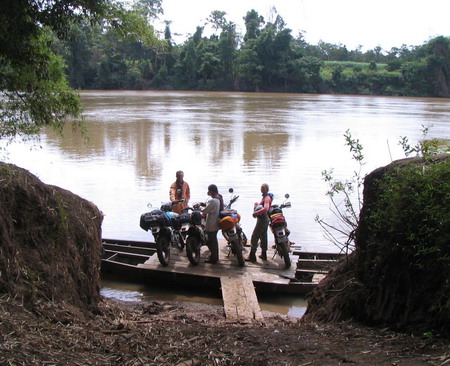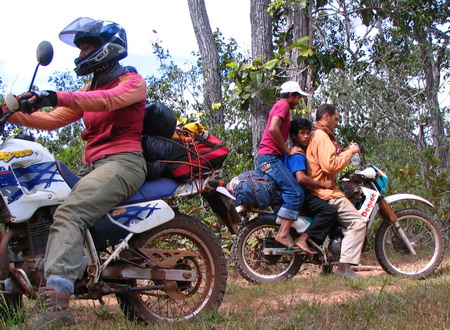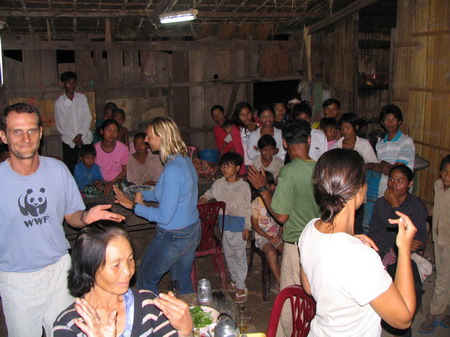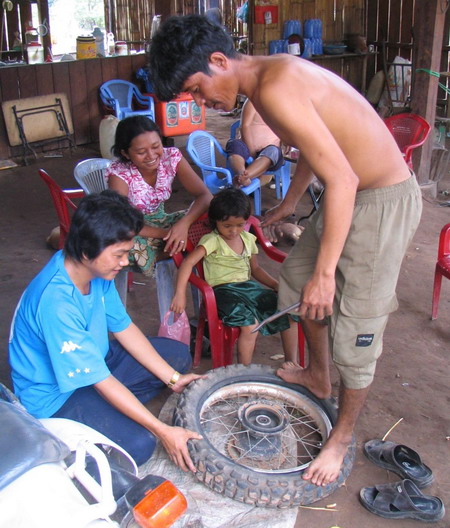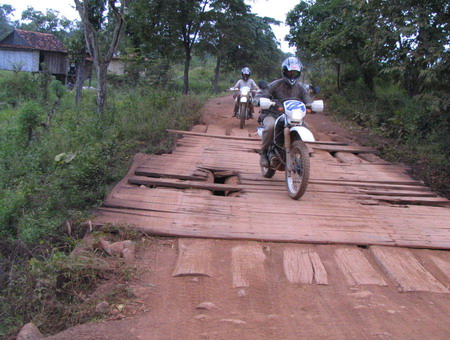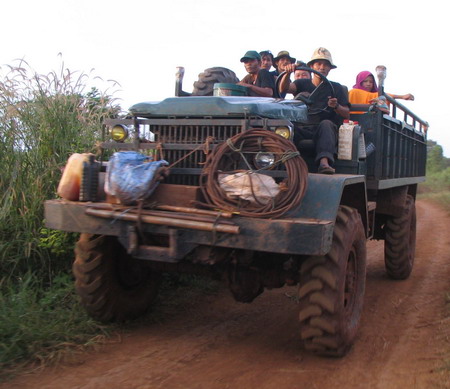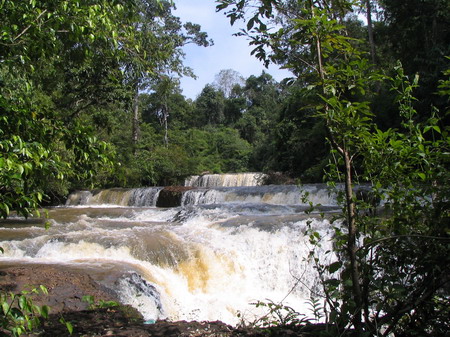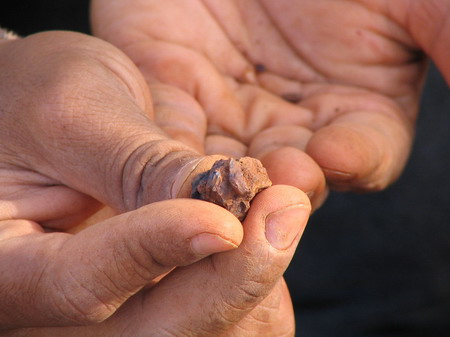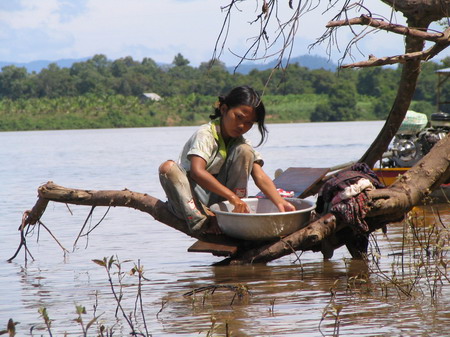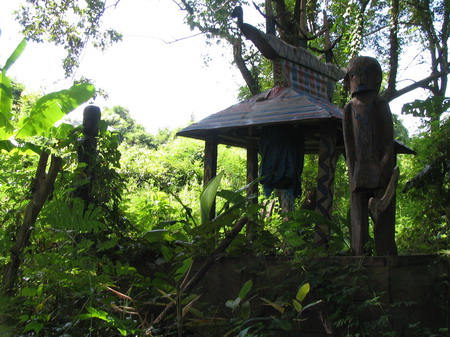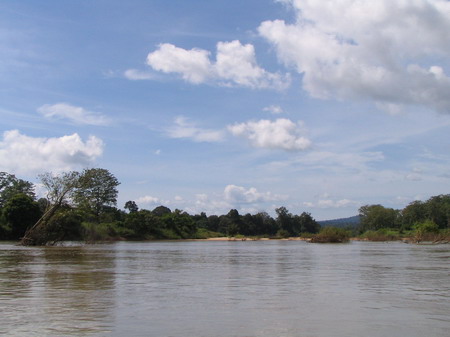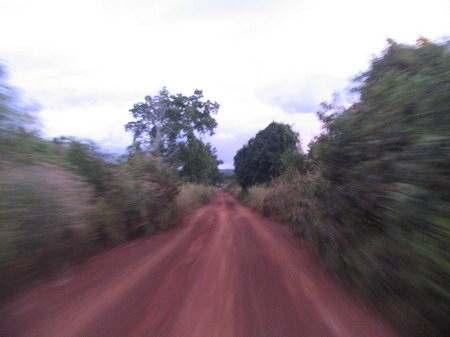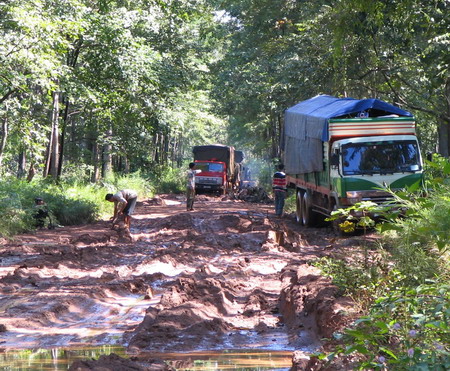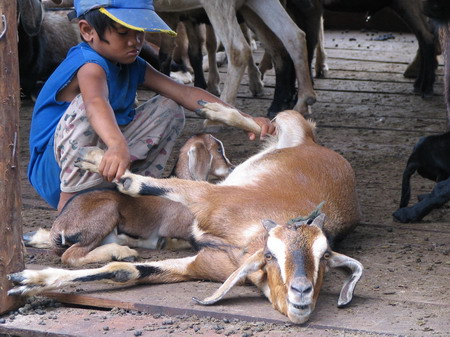BY CHARLOTTE MCDONALD-GIBSON AND MOM CHANTARA SOLEIL
Yan Tuel is feeling ignored. With just two weeks until Election Day, Tuel does not know who he will vote for. He cannot tell the difference between the logos of the parties running in his province, and like 80 percent of the people in remote Ratanakkiri, he is illiterate. But so far, no party has come to tell Tuel why he should support them.
“We do not really know who we will vote for, we will just tick any box because we cannot read or write,” he says. “The CPP came here but they did not show us what their picture was. We want to know the policies of the other parties, but they have not come here so how can we know?”
Tuel belongs to the Tumpuan tribe, one of eight ethnic groups indigenous to the highlands. Collectively known as chunchiet, they comprise over two-thirds of Ratanakkiri population.
The Cambodian People’s Party (CPP) has been firmly entrenched in the province since 1993, and the one seat up for grabs on July 27 looks likely to stay in its hands.
But Tuel has other concerns. .His wife is ill, and he cannot afford to take her to hospital. Instead he will pray to the gods for her recovery.
His Problem is not uncommon in Ratanakkiri, one of the poorest provinces. Decades of war and isolation have taken their toll: healthcare is basic, education limited, and people suffer at the hands of unscrupulous businessmen.
Sam Oeun, a student and volunteer at Ratanakkiri-based NGO Non-Timber Forest Products (NTFP), says the chunchiet’s day-to-day concerns often outweigh political ones.
“Some of the just think whether or not they have enough to eat today and tomorrow,” he says.
Bringing voter education to the villagers is also a problem. The indigenous groups speak different languages, and this, combined with high illiteracy levels and low education, means information is best spread by word of mouth.
Meas Khlemsa of Comfrel, an election monitoring NGO, says the organization has been running training courses and distributing pamphlets detailing the policies of all 23 competing parties.
“Comfrel tries its best to tell the people it is their duty and their right to vote to make a change in the country,” he says.
But despite the best efforts of NGOs, information does not appear to have reached the length and breadth of the province. The political parties are not making much headway either.
“Only the CPP has come here,” says Jarai villager Cheu Ven, 45. “I also want to know about the other parties, but they have not come.”
The apparently lackluster campaigning could be due to the inaccessibility of the villages – roads turn to rivers in the rainy season. Perhaps before polling day there will be a flurry of countryside visits. Or, in what looks like a one horse race, are the other parties despondent?
“My assumption is that Funcinpec cannot get enough votes for the one seat,” says Hor Ang, Funcinpec’s security chief in Ratanakkiri. “The strength of the CPP at the local level means Funcinpec cannot penetrate.”
The CPP has long had an iron grip on the province. Deputy provincial chief Muong Pay says his party owes its continuing success to development and its role in defeating the Khmer Rouge.
“One hundred percent of people living in Ratanakkiri support the CPP,” he says. “There are many reasons. The government helped free the people from Pol Pot … There is no prejudice against the ethnic minorities and there is protection against the return of the Pol Pot regime.”
This popularity is visible along Road 19, which runs through the heart of the chunchiet areas up to the Vietnamese border. CPP signs are frequent, as is praise for the ruling party.
“The CPP has been helping us for 28 years,” says Bouy Cheng, of the Jarai tribe. “They dig wells, build schools, give us containers for crops … they have helped us to live in peace and they improve democracy and freedom. The other parties say they will help but they have not yet.”
All the villagers speak of gifts from the ruling party, but the competition is skeptical about the CPP’s handouts.
“I have never seen any help except handing gifts to the people,” says SRP candidate Kong Chan. “It is the money from the government, but they say it is from the party. Like building roads – that is money from the ADB or Japanese aid. The actual love from the heart of the people is not 100 percent true.”
Funcinpec’s Hor Ang insists the CPP’s popularity persists only because of this material support, and maintains its policies are actually harming livelihoods.
“On the surface it seems that the CPP is helping the people, but in fact the land and the forest are being destroyed by the CPP,” he says.
Ang is referring to illegal logging, which has plagued the heavily forested northern provinces for years. The indigenous people also found that land they had lived on for generations was claimed by outsiders. NTFP’s Sam Oeun describes one such case.
They were offered new motorbikes and gifts and persuaded to make their fingerprint agreeing to give away their land unwittingly,” he explains. “Minority people know very little about law. They think the axe and knife are powerful for them … They did not think their fingerprint would harm them.”
However Ang says such incidents do not damage the CPP’s vote.
“Most people don’t care about violations on land because they move away,” he says.
But opposition parties are not admitting defeat. The SRP recently gained popularity in the province when it won the only non-CPP commune chief position here in 2002. In a province with a large and porous border with Vietnam, the SRP’s hard stance on immigration and border encroachment could prove popular with the Khmer electorate.
However none of the chunchiet the Post spoke with said such issues worried them. Even near the border, villagers expressed no concern about their neighbor. Most chunchiet villagers say border squabbles are not a priority – they are still waiting for the basics.
“I would like to live like people in the rest of Cambodia,” says Jarai villager Cheu Ven. “Most Khmer people have education so they can improve their lives. This commune does not have a school. Even the well that was promised has not come yet.”
Tumpuan villager Tuel just wants to be able to make an informed choice at the polls and improve life for his family: “We want parties to understand us and our needs. We need everything.”
Continue reading Campaign remote from hill-tribe reality – Phnom Penh Post July 18-31, 2003, p. 7
